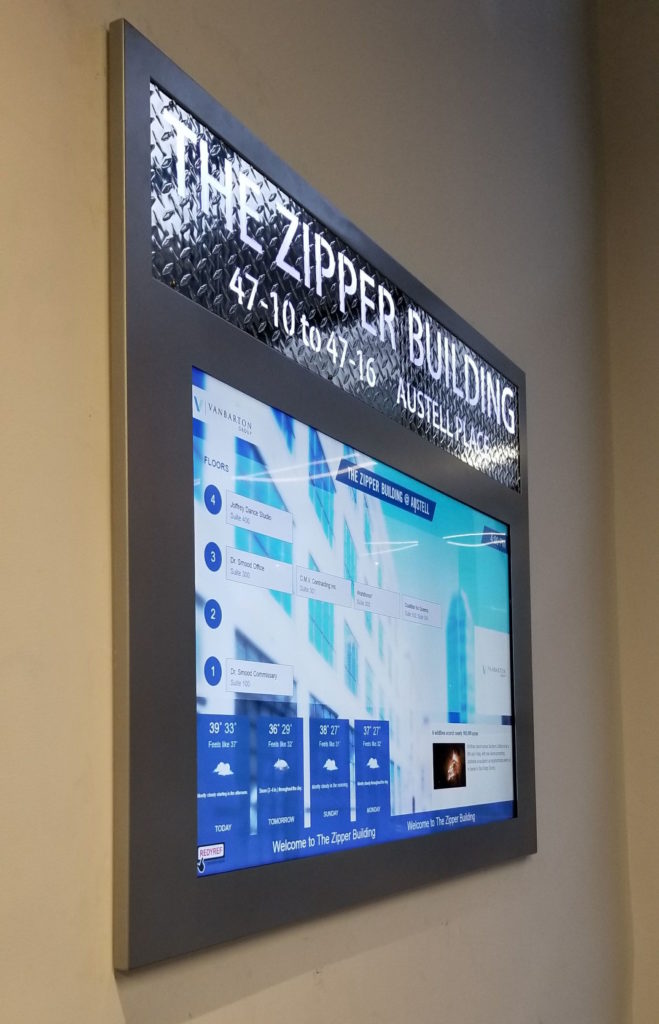Digital directories are an important yet overlooked portion of many businesses today. Besides providing an easy format to view information, they help to reduce customers' and visitors' stress while being remarkably easy to use. So today, we will discuss why digital directories are an invaluable addition to office buildings, hospital campuses, and other large-scale, multi-location environments.
What is a digital building directory?
A digital directory consists of a static or touchscreen display, a media player and digital signage software. One of the greatest strengths of digital directories is their ability to display current information at all times, whether local area information, events, office locations, news or weather. Depending on the size and interactivity of the display, information may remain static, or rotate through various screens.

Why are digital directories important for visitors and guests?
A digital building directory is important for visitors and guests as it offers them an easy way to access information about their surroundings. They appreciate the ability to access information on their own terms, rather than needing to waste time finding someone who can help them, therefore speeding up the process.
Examples of businesses that use digital directories
- Hospitals: Hospitals employ directories to help visitors and patients find various areas including labs and specific departments, as well as personnel
- Commercial: Office buildings utilize digital directories to assist visitors in finding various businesses or offices
- Retail: Commercial entities use digital directories to help guests locate specific stores or departments
- Residential: Residential companies employ directories to display tenants and help visitors locate them more easily
- Government buildings: Government buildings utilize directories to display employee office locations, courtrooms, and departments
Digital vs analog directories
Directories are important assets for many organizations, but many people do not understand the difference between digital and analog directories. Directories that need to be updated continually generally find that investing in a digital solution is well worth it over time. Below we will discuss the differences between the two.
Benefits of digital directories
Digital directories offer companies benefits that manual directories simply cannot. The two most important are efficiency and accuracy. Digital directories are quick and easy to update, allowing organizations to provide the most current information at all times. Below are some additional benefits to going digital.
- Accurate and up-to-date information at all times
- Attractive form factor
- Easy to use for visitors and guests
- Easily updated in a short amount of time
- Easy to view
- Time-saving
Cons of manually-updated directories
For those who don’t trust digital formats, manually-updated directories are always a reliable, if slow, option. However, beyond the positive of being reliable, there are some drawbacks to manual displays.
- Updates cannot be quickly or easily made
- Less modern and attractive than their digital counterparts
- Information is often out of date
- Time-consuming to maintain
How much do digital directories cost?
For digital directories, there are usually two primary costs involved: one for the display itself and another for the software. Software cost can vary greatly depending on functionality, but in general, expect to pay between $1800 and $2900 per unit. Displays are also available at a wide variety of price points -- $600-$2500 on average -- with the high end representing larger units with interactive touchscreens.
How do digital building directories work?
Most digital building directories are fairly straightforward to operate:
- Location selection: Choose an area with good visibility. Turn-key digital directory providers like REDYREF offer installation services, which can be valuable for more complex environments or solutions
- Set up the software: Most reputable companies will ship directories with the selected software pre-installed
- Load content: This can include many different variables and what is possible is completely dependent on what type of software was purchased. Most companies offer training on how to upload and change the directory's content, including lists of companies, personnel, tenants, offices, departments, building information, and services.
- Update consistently: Provide frequent updates to your directory so that the most pertinent information is always displayed.
Companies like REDYREF also offer physical installation services, as well as maintenance and service contracts.

